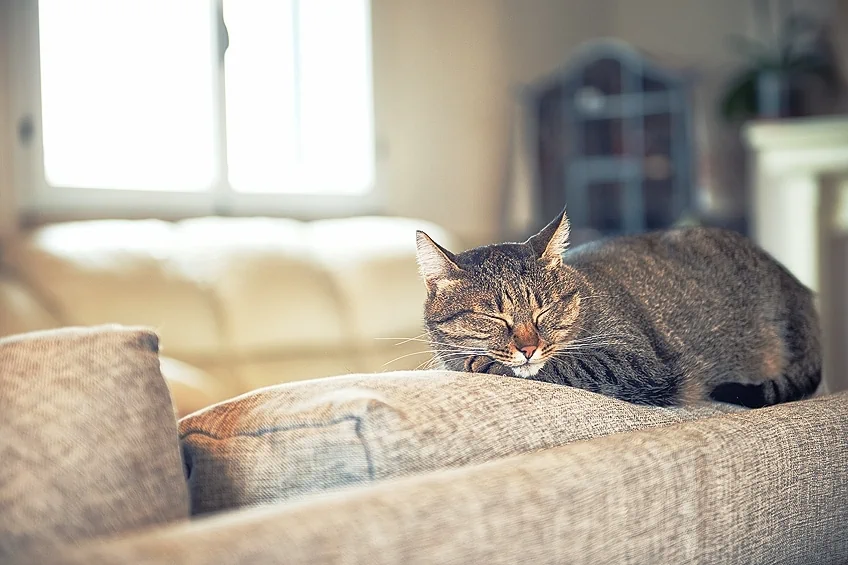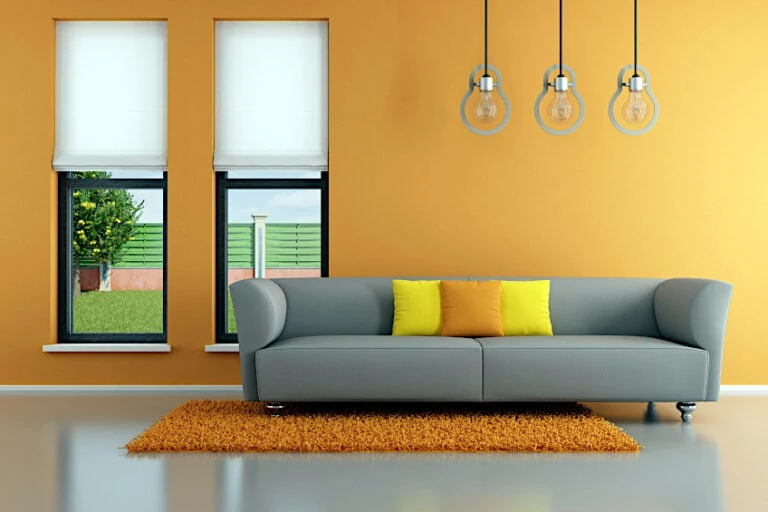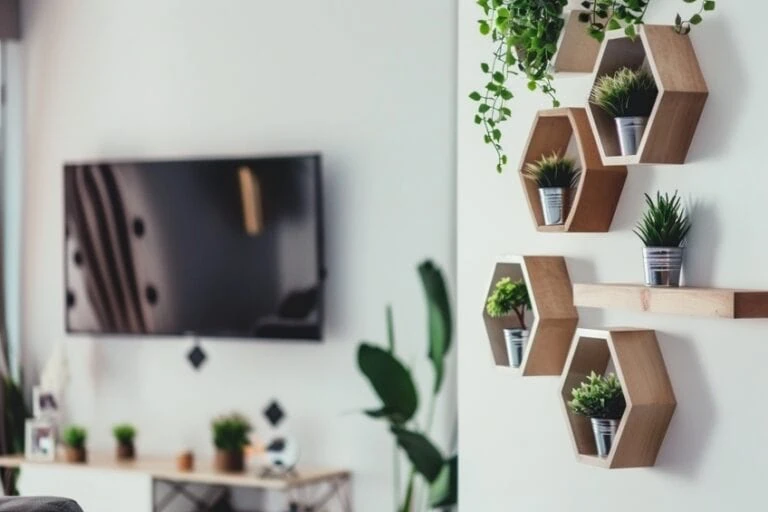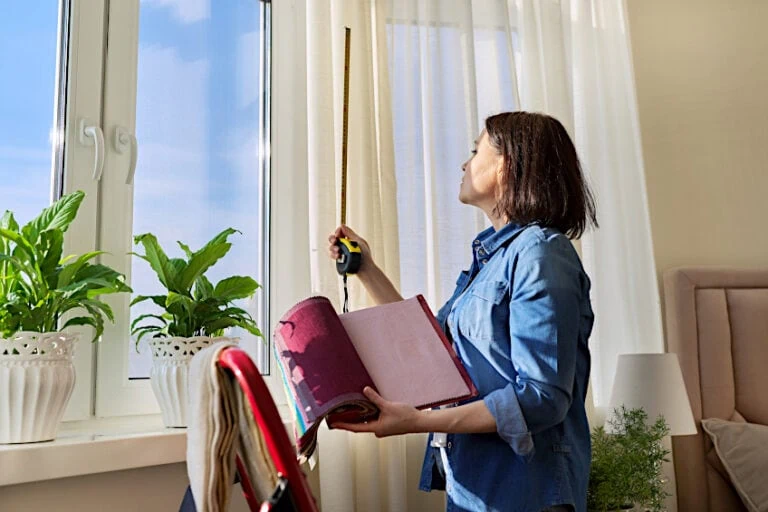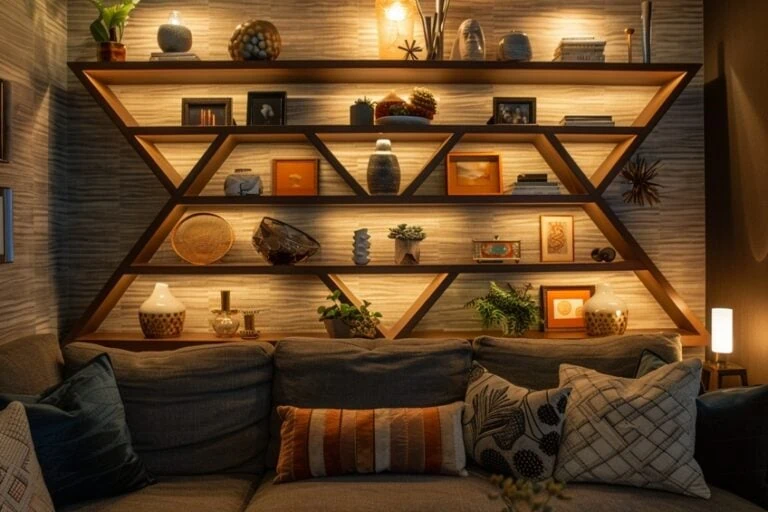Best Couch Fabric for Cats – Feline Friendly Sofas
This post may contain affiliate links. We may earn a small commission from purchases made through them, at no additional cost to you.
Welcome, feline aficionados and couch connoisseurs! Are you tired of your furry friends turning your beloved sofa into a scratching post or shedding sanctuary? Fear not, for we embark on a whimsical journey through the realm of fabrics to discover the purr-fect solution for harmonious cohabitation with our beloved whiskered companions. In this delightful exploration, we uncover the secrets of the best couch fabric for cats, where comfort meets durability, and style dances with practicality. Let’s dive into the world where claws and cushions coalesce in harmony!
Key Takeaways
- A cat-friendly couch material must be durable, resistant to scratches, and easy to clean.
- Choosing the correct fabric reduces the appeal of the couch as a scratching spot for cats.
- Some materials are best avoided to prevent excessive damage from cat scratching and other behaviors.
Essentials of Cat-Friendly Couch Materials
When selecting furniture for a home with cats, choosing the right couch material is crucial to ensure both the furniture’s longevity and the pet’s comfort. Cat owners are familiar with the struggle of maintaining the look and integrity of their couches amidst fur, claws, and the occasional accident. It’s not only about finding a durable material but also about selecting one that can withstand the specific types of wear that feline friends may inflict.
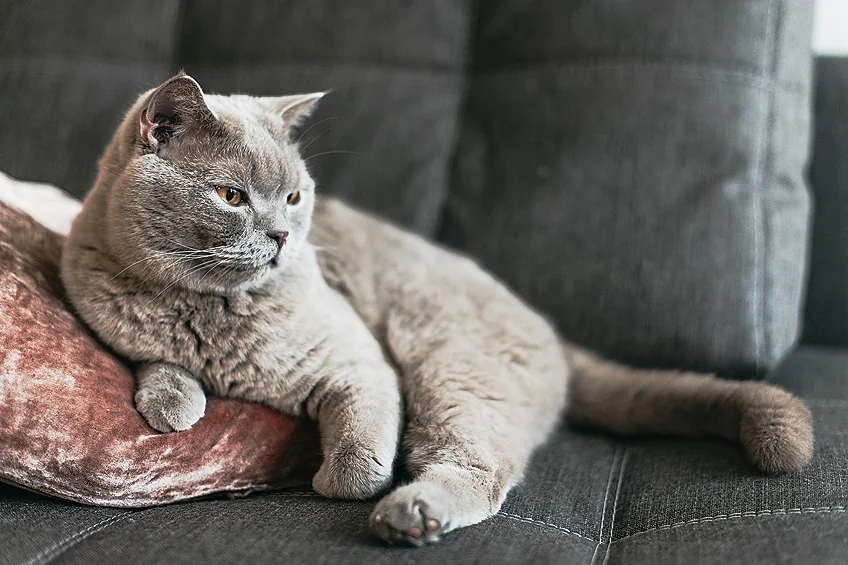
Cats have a natural instinct to scratch, which helps them keep their claws sharp, mark their territory, and stretch their muscles. This behavior, although perfectly normal, can wreak havoc on certain fabrics. To accommodate these natural behaviors while maintaining an aesthetically pleasing living space, pet owners must seek out materials that are resistant to scratches and easy to clean. Additionally, the fabric should not appeal to cats as a scratching surface, which would encourage unwanted behavior. When selecting a couch fabric for homes with cats, several key characteristics must be considered to ensure the material is cat-friendly. Here is a concise guide:
- Durability: The material should withstand a cat’s sharp claws. Microfiber stands out due to its resilience against scratches and its ability to hold its form after clawing.
- Tight weave: Fabrics with a tight weave tend to be less appealing for cats to dig their claws into, making them a preferable choice.
- Stain resistance: Given that accidents happen, materials that are easy to clean and naturally repel stains are essential. Synthetic fabrics like polyester and faux suede are notable for being stain-resistant.
- Pet hair management: Cat-friendly upholstery should not trap pet hair. Leather and faux leather are advantageous as they allow easy hair removal with a simple wipe-down.
Top Fabric Choices for Cat Owners
When selecting a couch material, cat owners should consider durability, resistance to scratches, ease of cleaning, and comfort. For the best cat-proof couch, one should look for materials that balance functionality with comfort for both the cat and the owner. Choosing the right fabric or upholstery will ultimately contribute to a harmonious living experience for all.
| Fabric Type | Pros | Cons |
|---|---|---|
| Microfiber | Durable, Stain-resistant | May still be scratched |
| Leather | Easy to clean, Resilient | Can show scratch marks |
| Denim | Durable, Washable | Less traditional aesthetically |
| Faux Suede | Stain-resistant, Soft | Less durable than real suede |
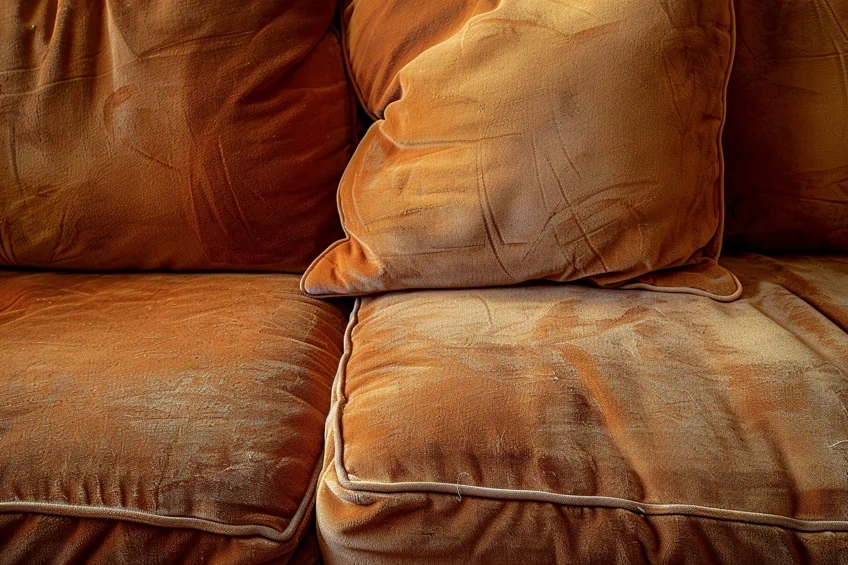
Leather and Faux Leather
Leather sofas are a popular choice for their durability and ease of cleaning. They can handle a fair amount of wear and can be wiped down quickly. Faux leather, also known as pleather, offers a similar look and feel to leather with less maintenance and often at a more affordable price point.
Synthetic Fabrics
Synthetic fabrics such as nylon and polyester are known for their resilience. These materials can withstand cat claws better than some natural alternatives and are generally easier to clean. For those with cats, choosing tightly woven synthetic fabrics might help deter scratching.
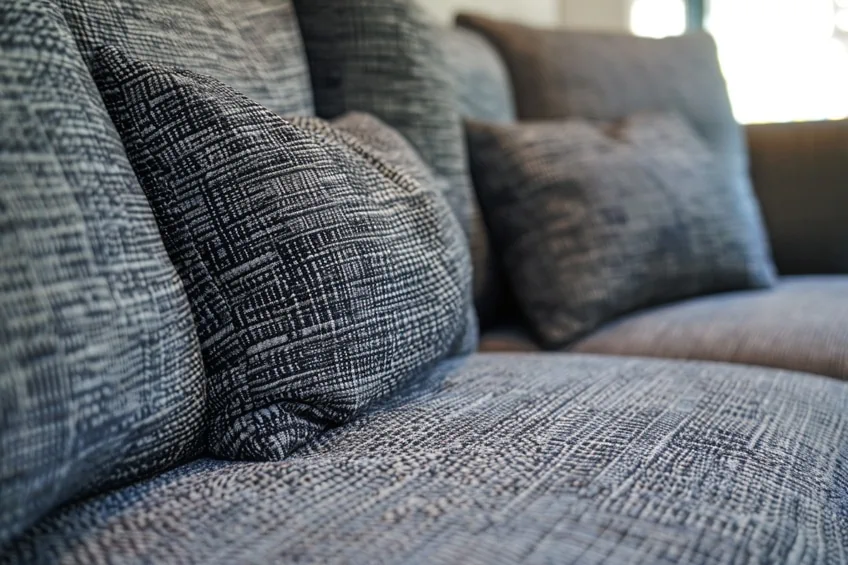
Natural Fabrics
Natural fabrics, including cotton, and canvas, are more susceptible to damage from cat claws and require more frequent vacuuming due to pet hair. However, they can be treated with a protective coating to improve resistance to wear and stains.
Slipcovers in natural fabrics are also a good option for easy washing and swapping out.
Microfiber
Microfiber is a tightly woven synthetic material that excels in resisting scratches and stains. It’s often chosen for its combination of comfort and longevity. Microfiber couches can typically be cleaned effectively with just a quick vacuum or wipe down.
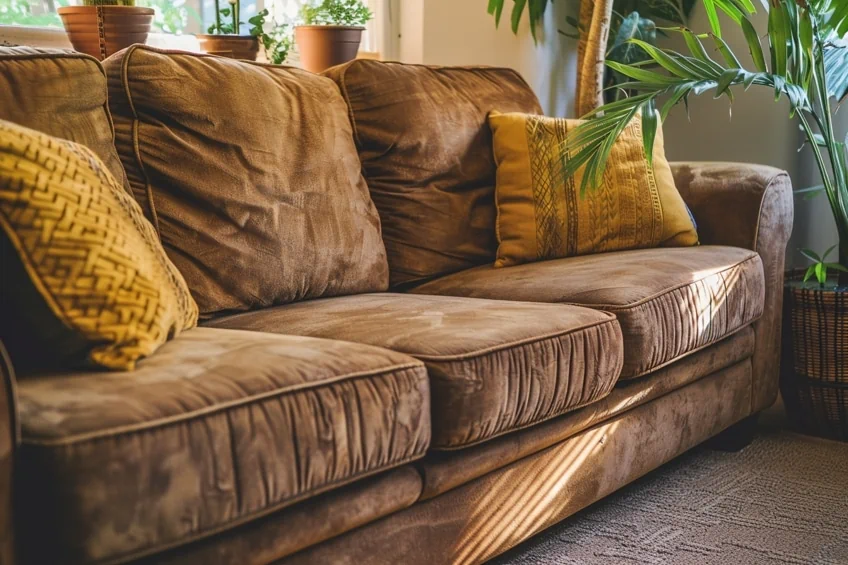
Faux Suede
Faux suede provides a similar texture and comfort level to real suede but with improved practicality for cat owners. It stands up to claw marks better and is less likely to absorb spills, making it a convenient choice for households with pets.
Denim
Denim is a sturdy, heavyweight fabric that can hold up well against cat claws. Its texture and color can mask pet hair and marks between cleanings. Denim slipcovers are an excellent choice for a sofa, given their durability and ease with which they can be thrown into the wash.
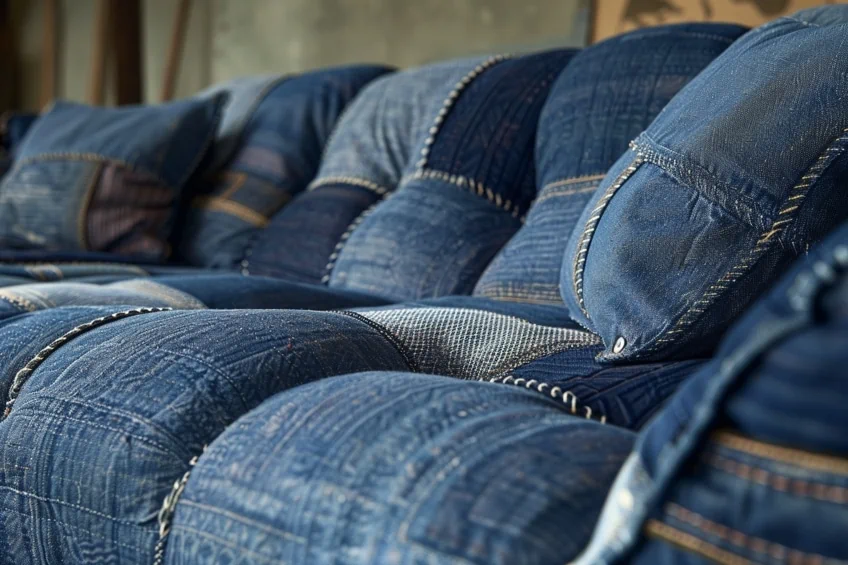
What Materials Should I Avoid?
When selecting a couch for a home with cats, certain materials can be problematic. It’s important to select fabrics that will stand up to the wear and tear of cats’ claws and avoid those that could quickly become damaged or fray. Materials to avoid include:
- Wool: This fabric can attract cats to scratch due to its texture.
- Silk: This delicate material is easily snagged and damaged by claws.
- Chenille: Its loops and raised texture can catch on claws.
- Velvet: Velvet, particularly long-pile, is prone to collecting hair and shows scratches clearly.
- Suede: While suede might not snag as easily, it’s difficult to clean and can show scratch marks.
- Tweed: The texture of tweed can be enticing for cats to claw at, leading to visible damage.
Choosing the right fabric is crucial for durability and longevity, not to mention maintaining a clean and orderly appearance for one’s furniture. Opting for tightly woven, scratch-resistant materials like microfiber may be more suitable for households with cats.
Selecting a couch with materials that do not align with cat behavior can lead to unsightly furniture and potential extra costs for repair or replacement.
How To Keep Your Cat Off the Couch
One effective way to discourage cats from using the couch is to provide alternative spaces that are more appealing. Cats need their own designated areas where they can relax and play, such as cat trees or beds situated away from furniture. A cat tree with multiple levels can be particularly enticing. Making the couch unattractive can also deter visits. This could involve:
- Double-sided tape: Cats dislike sticky textures, so applying double-sided tape to the couch can be a deterrent.
- Furniture covers: Use covers that are not comfortable for the cat to sit on, which can make the couch less inviting.
- Citrus-scented sprays: Cats are not fond of citrus smells. Spraying a citrus-scented repellent on the couch can help keep them at bay.
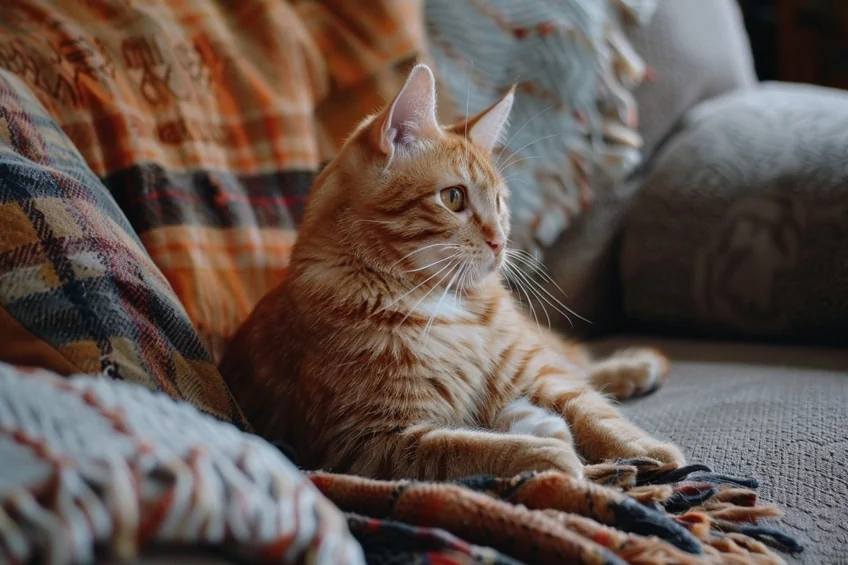
Consistency in training is key. If a cat jumps on the couch, they can be gently placed on the floor repeatedly until they associate the couch with being removed. Positive reinforcement helps reinforce good behavior. When the cat uses their designated areas instead of the couch, they should be rewarded with treats or affection. Lastly, regular grooming can reduce the amount of fur on the couch. Brushing a cat every other day can help manage shedding, and using a silicone brush or glove can pick up loose hair before it reaches the couch. Using a combination of these tactics can help keep the couch cat-free, while keeping the home harmonious for both pet and owner.
As we wrap up our adventure into the realm of couch fabrics fit for our feline friends, let us not forget the invaluable lessons learned. From sturdy microfiber to resilient leather, each fabric offers its own unique blend of charm and cat-friendly resilience. Remember, dear readers, the best couch fabric for cats is not merely about durability but also about ensuring our homes remain havens of comfort and joy for both humans and their whiskered companions. So, as you embark on your quest for the ideal sofa fabric, may your choices be as wise as a cat’s gaze and as cozy as a purr-filled nap. Here’s to many more cuddles and cat-approved lounging sessions ahead!
Frequently Asked Questions
What Type of Sofa Fabric Is Most Durable for Homes With Cats?
Microfiber, also known as faux suede, microsuede, or ultrasuede, is one of the most durable fabrics for homes with cats. Its dense weave resists scratching and is budget-friendly compared to other materials.
Are There Any Fabrics That Cats Are Less Likely to Scratch or Damage?
Leather is an excellent option as it is less attractive for cats to scratch and is easier to clean compared to other fabrics. Cats are also generally less inclined to scratch tightly woven textiles.
What Are the Best Options for Cat-Proofing a Sofa?
To cat-proof a sofa, one might consider using a slipcover specifically designed to withstand cat claws. Additionally, individuals can opt for sofas made from microfiber or leather, both known for their resilience against scratches and punctures.

